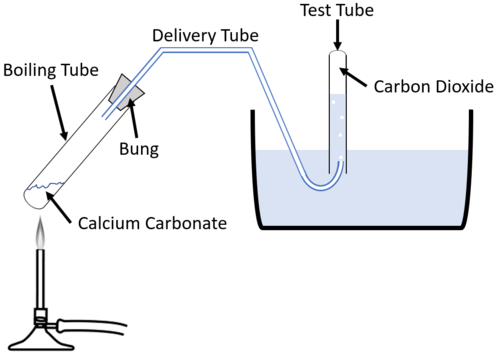Difference between revisions of "Thermal Decomposition"
(→Method) |
|||
| Line 23: | Line 23: | ||
: 3. Place the [[Test Tube]] underwater to fill and hold upside down over the exit of the delivery tube. | : 3. Place the [[Test Tube]] underwater to fill and hold upside down over the exit of the delivery tube. | ||
: 4. Heat the metal carbonate in the [[Boiling Tube]]. | : 4. Heat the metal carbonate in the [[Boiling Tube]]. | ||
| + | : 5. Observe any colour change of the [[substance]] in the [[Boiling Tube]] and collect the [[gas]] to test whether it is [[Carbon Dioxide]]. | ||
|} | |} | ||
Revision as of 14:18, 29 September 2018
Key Stage 3
Meaning
Thermal Decomposition is a type of chemical reaction in which a large compound is broken down into smaller molecules due to high temperatures.
About Thermal Decomposition
- When materials are heated the particles inside vibrate and move more quickly, colliding with one another. For large molecules this can cause them to collide with enough force to break the molecule apart into smaller molecules. This is thermal decomposition.
- Thermal Decomposition happens to certain types of compound more than others. At this stage the thermal decompositions you should know have the general equation: Metal Carbonate → Metal Oxide + Carbon Dioxide
Examples
Metal Carbonate → Metal Oxide + Carbon Dioxide
- Calcium Carbonate → Calcium Oxide + Carbon Dioxide
- Copper Carbonate → Copper Oxide + Carbon Dioxide
- Zinc Carbonate → Zinc Oxide + Carbon Dioxide
Method
|
